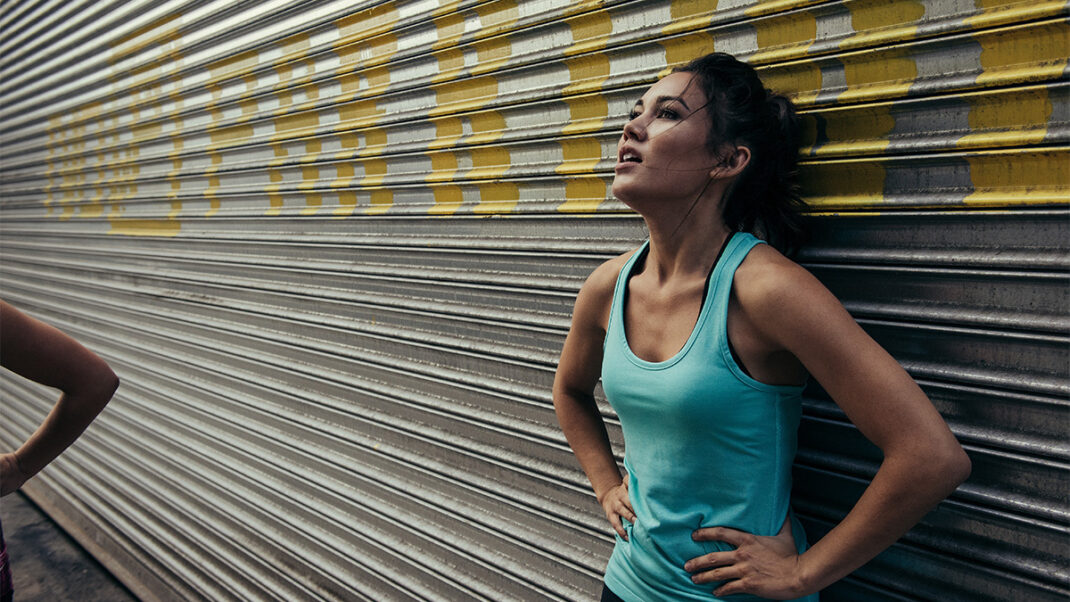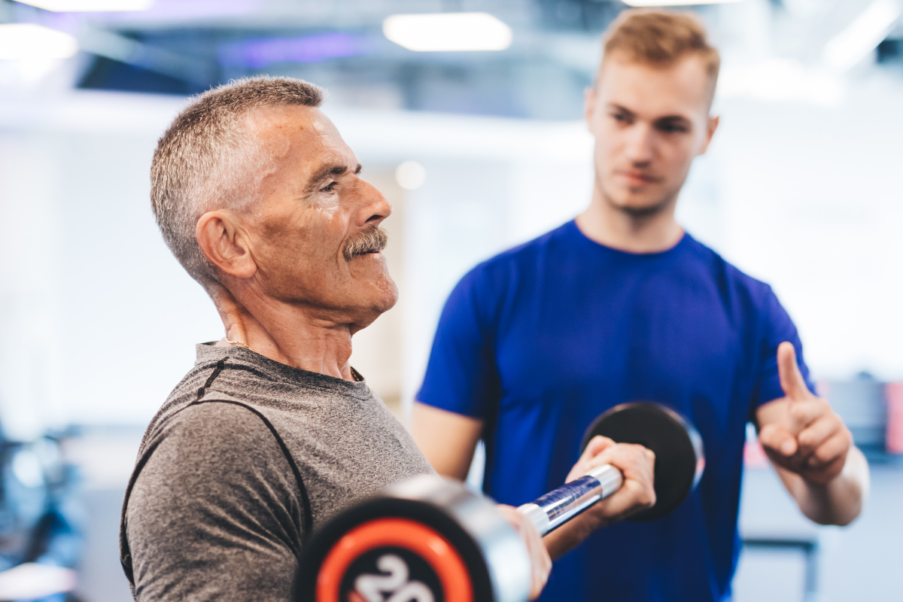Sports Conditioning Classes and the Recreational Athlete
Plan ahead and prepare people for their favorite activities.

Recreational athletes dig in their heels and enthusiastically participate in group fitness classes. Many also play seasonal sports and sign up for specialized, branded endurance events. Fitness facilities are taking notice and offering fee-based, progressive offerings to satisfy the needs of sporty members who want to see how far they can take their hard-earned skills without getting injured. According to Helen Vanderburg, co-owner of Heavens Elevated Fitness and Yoga, in Calgary, Alberta, and 1996 IDEA Program Director of the Year, recreational athletes “are not necessarily entering to win; they’re entering to compete.”
Sport-specific conditioning classes focus on endeavors such as skiing, triathlons and obstacle races. Other popular options include golf, cycling and hockey. “[Identifying and tagging on to] areas people gravitate to, and then programming around those interests, has always been a successful [strategy],” says Krista Popowych, fitness instructor and 2014 IDEA Fitness Instructor of the Year, who lives in Vancouver, British Columbia. What do you need to know about providing winning sports-conditioning programs?
The Basics
In this article, “sports conditioning” will refer to fee-based sport-specific programs and not to general sports conditioning classes. According to Vanderburg, sports conditioning is popular among all age levels. There are a couple of reasons for the widespread interest. First, baby boomers are transitioning from activities like running to lower-impact options such as cycling and triathlons. This generation wants to stay competitive, yet boomers need sport-specific training to lessen the chances of injury. Second, younger generations who grew up in a health-focused society understand that they need to train to be successful. “They’re going into it saying they want to be fit and strong for the activities they enjoy,” Vanderburg explains.
Many sport-specific classes are seasonal and run 6–12 weeks before the beginning of the season. Each class progresses through the fitness needs of the individual sport. For example, the golf prep class at Heavens Elevated Fitness and Yoga begins in January and runs for 12 weeks. Since golf doesn’t make the same cardiovascular demands as, say, hockey, the focus is on mobility and body awareness. “[Golfers] need to balance out right and left sides of their bodies because they typically play one way,” says Vanderburg.
The hockey prep class, meanwhile, takes recreational hockey players through a progression of cardio, interval and bike training to build aerobic capacity prior to the season. Once participants establish a good cardiovascular base, they move into resistance work with the TRX® Suspension Trainer™. Instructors weave yoga and mobility drills throughout the program.
If you’re interested in starting and/or teaching sports conditioning classes (and have buy-in from management), consider the following:
Know the Sport
To build and teach a progressive sports conditioning class, first do your research: Watch and, if possible, play the sport, and talk to successful athletes. Although there is some similarity
in movement patterning across sports, it’s important to understand movements as they relate to the particular sport you are teaching. For example, does the sport require a lot of stopping and starting? What about cutting, jumping, throwing or twisting moves? Participants will be better able to apply your cues to their activity if you are familiar with the moves in the context of the sport and can customize your cuing.
“You need to have a solid understanding of the activity, and it certainly would be an asset to have done it,” says Popowych. “Even if you go out and golf and you’re terrible at it, at least you tried.”
And if golf is still a mystery after trying it, tap that golfer friend or colleague for insight into the sport. A few key questions to ask:
- What are the common movement pattern errors?
- What are the main injuries?
- What are the universal concerns athletes of this sport have?
“It really is about bringing two things together: [doing your] research, and then applying your programming and your knowledge to create a progressive program,” says Vanderburg.
Offer Multilevel Options
Since sports conditioning classes attract participants of all ages and fitness levels, you must know how to regress or progress techniques. Modifications are especially useful for dynamic, high-impact movements like jump squats, bounds and box jumps, as not all participants will be able to perform them safely.
The jump squat, for example, can have five levels of difficulty:
- level 1: stationary squats
- level 2: stationary squats with heel lift at the top
- level 3: five jump squats alternating with five stationary squats
- level 4: jump squats
- level 5: jump squats while holding weight
Though most participants will self-select the appropriate difficulty level, some will be overambitious. Pay close attention to how each person is handling the workload. “A good instructor will watch and give people suggestions,” says Green Bay, Wisconsin–based Linda (Freeman) Webster, personal trainer and four-time finalist for IDEA Fitness Instructor of the Year. “If you see [participants] who maybe shouldn’t be jumping because their form isn’t good, you should be able to show them a more appropriate version or variation.”
Incorporate Tests
Regardless of the class focus, showing tangible progress is important, especially if the cost of the class isn’t included in membership dues. One effective way to do this is through a series of fitness tests. Begin testing at the presession, then test at set intervals (e.g., every 3 weeks), and test again at the end of the program.
According to Webster, there are a variety of ways to test progress, from the 3-minute step test to the 40-yard dash. Even if your facility has limited equipment and/or space, you can develop an effective test with basic exercises: pushups, situps, squats, etc. The key is to remain consistent: “If I do [triceps] dips, I make sure I record [certain information]: Did they have their feet flat and knees bent? Did they extend their legs? Were they on an 18-inch step?” says Webster. “You can be pretty creative, as long as you recreate the test.”
Watch Intensity
Many instructors like to incorporate a high number of repetitions of plyometrics and other intense exercises to develop the cardiovascular strength and explosive power needed for various types of sports. However, more isn’t necessarily better. At a certain point, the body exhausts stored muscle energy and simply can’t perform more squat jumps or burpees without compromising form. According to Webster, it’s not uncommon to see workouts that comprise five rounds of 20- to 30-second bouts of intense exercise alternating with 10- to 15-second breaks. “By the fourth or fifth round, some people are barely executing,” she says.
If the body is performing high-intensity plyometrics for 20 seconds, it needs approximately 1–3 minutes to recover, says Webster. However, recovery doesn’t necessarily mean having the class stand around. Incorporate active-recovery movements between plyometrics to let participants catch their breath and stay in the game. Once it’s time to go again, they’ll be refreshed and able to complete the next set with strength and coordination.
“Do you want your participants to feel strong and successful, or do you want them to feel beat up?” Webster asks.
Use Short Cues
There’s a time and a place to explain exercises, but it’s not when the class is in the middle of a set of high-intensity repetitions. Offer pointers when demonstrating the exercises (“Keep the core engaged; don’t let your knees collapse”), but otherwise keep the cues short and concise. “I try to stick to one or two words,” says Webster.
Once participants are hard at work, the goal is to motivate, not explain. “You don’t want them to stop and think at that point,“ Webster explains. “You want them to hear someone pushing them.“
Webster’s suggestions for short cues include these examples:
- “Quicker.”
- “Knees up.”
- “Give me more.”
- “Let’s go.”
These short cues are most effective when matched to a specific tone and intensity. If the goal is to get participants to move faster, say, “Let’s go” quickly. If the goal is to get participants to stay strong, say the cue with a deep, gruff voice. “You should try to match [your tone to] what you’re asking for,” says Webster.
The bottom line: Sport-specific conditioning classes can’t be taught in the same way as “generic” sports conditioning classes. To succeed, carefully plan, design and market a progressive program that meets the needs of all interested members while keeping them safe and motivated.
Lauren Bedosky
Lauren Bedosky is a Minneapolis-based health and fitness writer. She writes for a variety of trade and consumer magazines, which include RunnerÔÇÖs World and Experience Life. She can be reached at laurenbedosky@gmail.com.




